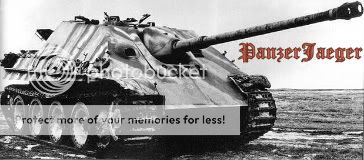
Originally Posted by
wiki
The Polish political determination to deploy forces directly at the German-Polish border, based on the British Government's promise to come to Poland's aid in the event of invasion, shaped the country's defence plan, Plan West. Poland's most valuable natural resources, industry and population were located along the western border in Eastern Upper Silesia. Polish policy centred on their protection especially since many politicians feared that if Poland were to retreat from the regions disputed by Germany, Britain and France would sign a separate peace treaty with Germany similar to the Munich Agreement of 1938.[47] The fact that none of Poland's allies had specifically guaranteed Polish borders or territorial integrity certainly did not help in easing Polish concerns. For these reasons, Poland disregarded French advice to deploy the bulk of their forces behind the natural barriers such as the Vistula and San rivers, even though some Polish generals supported it as a better strategy. The West Plan did permit the Polish armies to retreat inside the country, but it was supposed to be a slow retreat behind prepared positions and was intended to give the armed forces time to complete its mobilization and execute a general counteroffensive with the support of the Western Allies.[48]
The British and French estimated that Poland should be able to defend itself for two to three months, while Poland estimated it could do so for at least six months. Poland drafted its estimates based upon the expectation that the Western Allies honor their treaty obligations and quickly start an offensive of their own. In addition, the French and British expected the war to develop into trench warfare much like World War I. The Polish government was not notified of this strategy and based all of its defence plans on promises of quick relief by their Western allies.[49][50]
Polish forces were stretched thinly along the Polish-German border and lacked compact defence lines and good defence positions along disadvantageous terrain. This strategy also left supply lines poorly protected. Approximately one-third of Poland's forces were concentrated in or near the Polish Corridor, leaving them perilously exposed to a double envelopment from East Prussia and the west. Another third were massed in the north-central part of the country, between the major cities of Łódź and Warsaw.[51] The Poles' forward concentration largely forfeited their chance of fighting a series of delaying actions since their army, unlike some of Germany's, traveled largely on foot and lacked the ability to retreat to their defensive positions before being overrun by German mechanized formations.[52]
Although the Polish military had prepared for conflict, the civilian population remained largely unprepared. Polish pre-war propaganda emphasized that that any German invasion would be easily repelled. Consequently, Polish defeats during the German invasion came as a shock to the civilian population, who were largely unprepared.[52] Lacking training for such a disaster the civilian population panicked and retreated east, spreading chaos, lowering troop morale and making road transportation for Polish troops very difficult.
Originally Posted by wiki
The result was a far more traditional style of warfare based on attrition and brute force, which cost the Germans relatively heavy casualties compared to larger campaigns.Originally Posted by wiki
Originally Posted by wiki









 Reply With Quote
Reply With Quote
Bookmarks